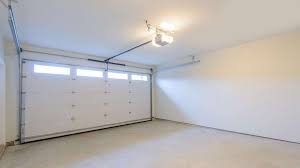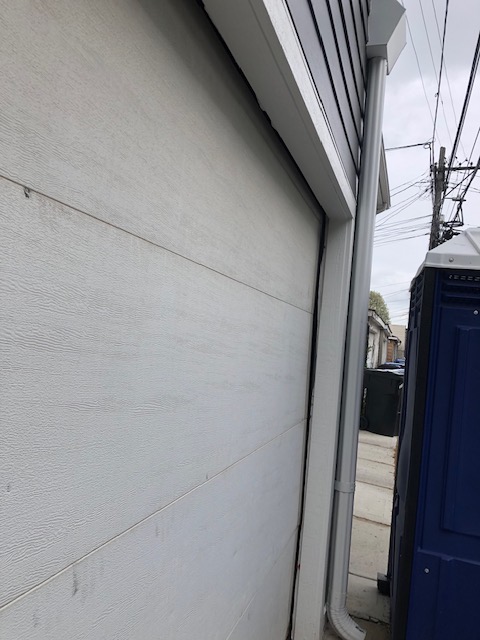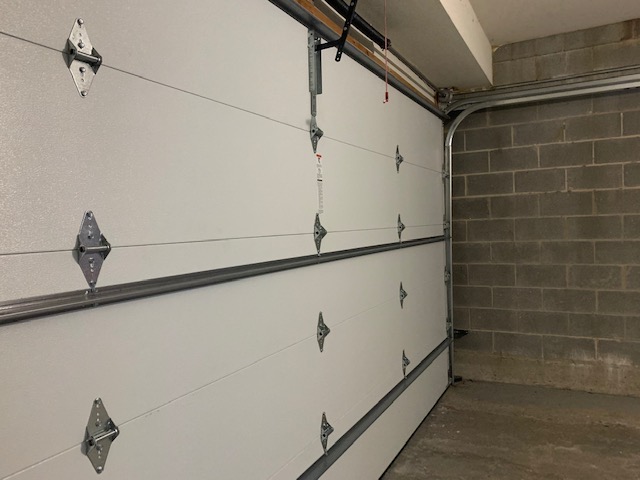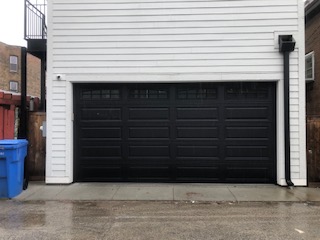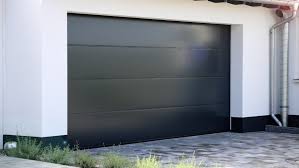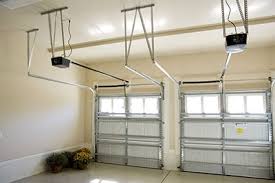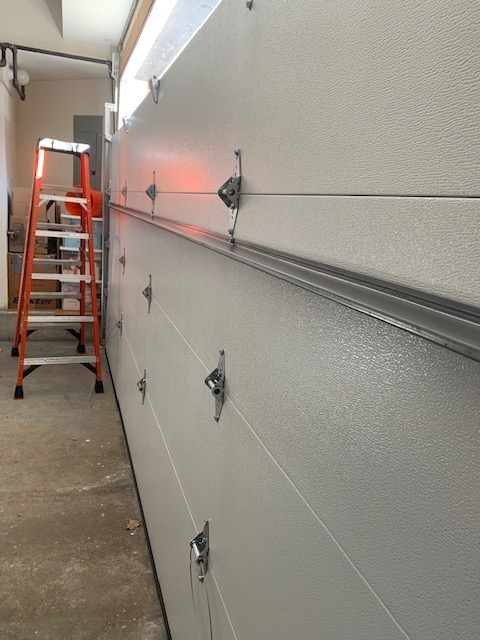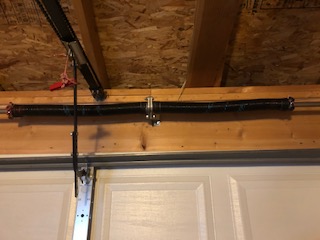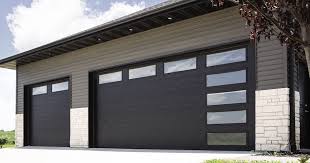
To keep your garage door running smoothly, it’s important to follow a regular maintenance routine. A garage door maintenance checklist can help you stay on top of this task, ensuring that your door is functioning properly and safely. With simple steps such as lubricating the moving parts and testing the safety features, you can prevent issues from arising and prolong the lifespan of your garage door.
Therefore, it’s essential to have a proper maintenance routine in place to keep your door in peak condition. In this article, we’ll provide you with a comprehensive garage door maintenance checklist that you can use to ensure your door functions optimally.
We’ll cover everything from lubrication to inspection of critical components such as springs, cables, and rollers. By following our checklist, you can proactively prevent issues from arising and extend the lifespan of your garage door.
Lubricating The Moving Parts
Lubricating the moving parts of your garage door is an essential part of your door’s maintenance. It not only helps reduce friction but also prolongs the life of your garage door.
The benefits of lubrication are many, including smooth and quiet operation, reduction in wear and tear, and less strain on the motor.
When it comes to choosing the right lubricants for your garage door, there are several types available. Silicone spray or white lithium grease is suitable for most doors as they offer long-lasting protection against rust and corrosion. However, if you live in a colder climate, you may want to consider using a low-temperature lubricant that can withstand extreme temperatures.
Regular lubrication of the moving parts should be done every six months to keep your garage door in peak condition.
Before applying any lubricant, ensure that all parts are clean and free from debris. Then apply a small amount of lubricant to all moving parts such as hinges, rollers, springs, and tracks.
Be sure not to over-lubricate as this can attract dirt and debris which could cause further damage to your garage door.
Inspecting The Springs
Let’s check the tension of the springs first – grab a tension meter if you have one, or use a ruler to measure the coils.
Corrosion is something to look out for too – if you spot any, it’s time for a replacement.
After that, it’s time to test the functionality of the springs – open and close the door a few times to see if it’s working properly.
We should also check the other moving parts of the door as well.
It’s important to keep an eye on these things so we can keep our door in peak condition.
If you have any doubts or questions, don’t hesitate to ask a professional for help.
Check Tension
Are you experiencing difficulties with your garage door opening and closing smoothly? One possible reason for this could be issues with the springs. To keep your garage door in top shape, it’s essential to inspect the springs regularly. Checking tension is an important part of this process.
Adjusting balance is one way to ensure that your garage door operates correctly. Unbalanced springs can cause uneven wear and tear on the hardware and other parts of the door, leading to costly repairs down the line. By checking tension regularly, you can make sure that your garage door stays balanced and in good working order.
Tightening hardware is another crucial step when inspecting the springs. Over time, nuts, bolts, and other fasteners may come loose due to regular use or vibration. Loose hardware can lead to problems such as squeaks or rattles when opening and closing the door.
By tightening all hardware during spring inspections, you can avoid these issues and keep your garage door in peak condition for years to come.
Spot Corrosion
Now that we’ve discussed the importance of checking tension and tightening hardware during spring inspections, another crucial aspect to consider is preventing corrosion.
Corrosion can occur due to exposure to moisture, which can lead to rust and weaken the springs’ structural integrity.
Regularly inspecting for signs of corrosion and taking preventive measures can help prolong the lifespan of your garage door springs.
To prevent corrosion, rust prevention techniques should be incorporated into your maintenance routine.
One effective method is applying a protective coating or lubricant to the springs. This can help prevent moisture from seeping into the metal and causing rust.
Additionally, it’s essential to keep the area around the garage door dry and free of debris to avoid excess moisture buildup.
Spotting corrosion early on is crucial in preventing further damage.
When inspecting the springs, take note of any signs of rust or discoloration on the surface.
If you notice any areas with rust forming, immediately clean them off and apply a rust inhibitor or protective coating as needed.
By regularly checking for corrosion and taking preventive measures, you can help ensure that your garage door operates smoothly and avoid costly repairs down the line.
Test Functionality
Now that we’ve covered the importance of garage door maintenance checklist tension, tightening hardware, and preventing corrosion during spring inspections, it’s time to move on to another crucial aspect – testing functionality.
A garage door needs to be balanced correctly for it to function properly. If it’s not balanced correctly, the door may not open or close smoothly, which can lead to issues down the line.
To check your garage door balance, first disconnect the opener by pulling the release handle. Then manually lift the door until it’s halfway open and let go. If the door stays in place, it’s balanced correctly. However, if it falls or rises on its own, there may be an issue with the springs.
If you notice any issues with your garage door balance during testing or regular use, it’s essential to troubleshoot and address them immediately. Ignoring problems can lead to further damage and increase repair costs in the long run. Some common issues include broken or worn-out springs, worn-out hinges or rollers, and misaligned tracks.
In conclusion, ensuring that your garage door is functioning correctly is crucial for maintaining its longevity and avoiding costly repairs. Testing for garage door balance and troubleshooting any issues as soon as they arise are essential steps that should be incorporated into your maintenance routine.
By taking these preventive measures regularly alongside checking tension/tightening hardware/preventing corrosion will help keep your garage door operating smoothly for years to come.
Checking The Cables
Garage door maintenance checklist, it is important to look for signs of wear and tear. Frayed or broken cables can cause serious damage to your door if left unchecked. If you notice any damage, it is crucial to replace the cables as soon as possible to avoid any potential safety hazards.
Replacing cables should only be done by trained professionals with experience in garage door maintenance checklist. Attempting to replace the cables yourself can be dangerous and lead to further damage. Professionals have the necessary tools and knowledge needed to safely and efficiently replace the cables on your garage door.
Hiring professionals for cable replacement also ensures that your door will continue to function properly after the repair has been made. Professionals can inspect other components of your garage door during the repair process, ensuring that everything is in peak condition.
By trusting professionals with your cable replacement needs, you can rest assured that your garage door will continue to operate safely and efficiently for years to come.
Examining The Rollers
After checking the cables, it’s time to move on to examining the rollers.
These small but essential parts play a crucial role in ensuring that your garage door operates smoothly and efficiently.
Over time, however, they can wear out or become damaged, leading to problems such as noisy operation or even complete failure.
To prevent these issues from occurring, it’s important to inspect your rollers regularly and replace them if necessary.
Look for signs of wear such as cracks or chips in the surface of the roller, or if it wobbles or doesn’t roll smoothly along the tracks.
If you notice any of these issues, it’s best to replace them with new ones right away.
Once you have replaced any worn-out rollers, don’t forget to properly lubricate them using a silicone-based spray or oil.
This will help reduce friction between the rollers and tracks, allowing your garage door to operate more quietly and smoothly.
Be sure not to over-lubricate though, as this can attract dust and dirt which could cause further damage over time.
By following these proper lubrication techniques and keeping an eye on your rollers’ condition, you can keep your garage door in peak condition for years to come.
Testing The Opener
Let’s start with checking the battery – it’s important to make sure it has enough power to open and close the door.
Then, we should inspect the wiring for any loose connections or exposed wires.
Lastly, to make sure everything is working properly, we’ll need to test the opener to ensure it’s functioning as it should. That’ll tell us if we need to make any adjustments or repairs.
Let’s get started!
Check Battery
Are you tired of your garage door opener failing at the most inconvenient times? Don’t let a dead battery be the culprit.
It’s important to regularly check and replace batteries to ensure your opener is working properly when you need it most.
Replace batteries in your opener every 2-3 years, depending on usage and battery life expectancy.
If you notice that your remote control isn’t working as well as it used to, or if you hear a clicking noise when pressing the button, these are signs that the batteries may need replacing.
Don’t wait until it’s too late!
Taking care of your garage door opener is essential for keeping your door in peak condition.
By regularly checking and replacing batteries, you can avoid unexpected breakdowns and ensure that your opener is ready whenever you need it.
So don’t neglect this important maintenance task – a little effort now can save you time, money, and frustration down the road.
Inspect Wiring
Now that you’ve checked and replaced the batteries of your garage door opener, it’s time to move on to the next maintenance task – inspecting the wiring. This is important because faulty wiring can cause your opener to malfunction or even pose a safety risk.
So, take the time to check the wires for any signs of wear and tear. Start by unplugging your opener from its power source and opening up the cover. Look for any frayed or damaged wires and replace them as needed. Additionally, ensure that all wires are properly connected and secured.
While you’re at it, don’t forget to replace bulbs if necessary and check sensors to make sure they’re working correctly. By regularly inspecting your wiring, you can prevent potential issues down the road. If you’re not comfortable working with electrical components, it’s best to call in a professional.
They can inspect your garage door opener thoroughly and identify any potential problems before they become bigger issues. Remember, regular maintenance is key to keeping your garage door opener functioning properly and ensuring that it lasts for years to come. So don’t neglect this crucial step – take care of your opener today!
Ensure Proper Functionality
Now that you’ve inspected the wiring of your garage door opener, it’s time to move on to the next step – ensuring proper functionality. Preventative measures are crucial in maintaining the safety and longevity of your opener.
One important measure is testing the opener regularly. To test the opener, start by clearing the area around your garage door. Make sure there are no people, vehicles, or objects in its path.
Then, press the button on your remote or wall control to operate the door. Observe how it moves and listen for any unusual sounds. If it operates smoothly and quietly, then you’re good to go.
However, if you notice any strange movements or noises, stop the operation immediately and check for any obstructions or damages. Additionally, test the auto-reverse feature by placing a small object like a roll of paper towels underneath the door before closing it.
If it doesn’t reverse upon contact with the object, then there may be an issue with its safety sensors. In this case, call a professional to inspect and repair your opener.
By following these safety precautions and regularly testing your garage door opener’s functionality, you can ensure that it operates safely and efficiently for years to come. Don’t wait until problems arise – take care of your opener today!
Cleaning And Maintaining The Exterior
Now that you’ve checked the inner workings of your garage door, it’s time to focus on its exterior. The outside of your garage door is just as important as the inside because it affects the overall look and feel of your property.
To keep it looking great, you’ll need to regularly clean and maintain it. Start by power washing the exterior of your garage door once or twice a year. This will remove any dirt, grime, or debris that has accumulated on the surface.
Additionally, consider rust removal for any areas that may have started to corrode. A rust remover can help get rid of unsightly spots and prevent further damage.
To maintain the appearance of your garage door, consider paint touch ups as necessary. Over time, the paint on your garage door may start to fade or chip away. Touching up these areas with fresh paint can give your entire property a facelift.
Additionally, weatherproofing can help protect against harsh elements like rain and wind. Regular cleaning and maintenance of your garage door’s exterior is essential for keeping it in peak condition.
Power washing and rust removal are simple tasks that can make a big difference in its appearance. And don’t forget about paint touch ups and weatherproofing – they’re both crucial for protecting against wear and tear over time.
Frequently Asked Questions
How Often Should I Have My Garage Door Professionally Serviced?
When it comes to maintaining your garage door, the question of whether to opt for regular or occasional maintenance arises.
Regular maintenance involves DIY servicing while occasional maintenance requires professional help.
DIY servicing can be done every six months while professional servicing should be done annually.
However, if you notice any unusual sounds or issues with your garage door, it’s best to call in a professional immediately.
By opting for regular DIY maintenance and occasional professional servicing, you can keep your garage door in top condition for years to come.
Can I Replace Garage Door Springs Myself Or Should I Hire A Professional?
When it comes to replacing garage door springs, you may be wondering if you should tackle the job yourself or hire a professional.
While DIY projects can save money, there are risks involved with attempting this repair on your own.
Professionals have the necessary expertise and tools to complete the job safely and efficiently.
Additionally, the cost comparison between doing it yourself and hiring a pro may not be as significant as you think, especially when factoring in potential damages or injuries that could result from doing it incorrectly.
Ultimately, your safety and the longevity of your garage door should be top priorities when deciding whether to go with a DIY approach or hire a professional.
What Are Some Signs That My Garage Door Opener Needs To Be Replaced?
If you’re experiencing issues with your garage door opener, it might be time to consider a replacement.
Some warning signs include slow opening or closing, excessive noise, and the need for frequent repairs.
While preventive garage door maintenance checklist can help extend the life of your opener, DIY tips may not always be enough to fix a malfunctioning unit.
In these cases, it’s best to consult with a professional and invest in a new opener for optimal performance and safety.
How Can I Prevent Rust And Corrosion On My Garage Door?
To prevent rust and corrosion on your garage door, regular lubrication is key. Applying a silicone-based lubricant to all moving parts, including hinges, rollers and tracks, will help prevent friction and moisture buildup that can cause rust.
Additionally, there are rust prevention techniques such as applying a protective coating or painting the door with a weather-resistant paint.
Remember to clean any dirt or debris from the door before applying any rust prevention methods to ensure they are effective.
By incorporating these garage door maintenance checklist tips into your routine, you can keep your door in peak condition and extend its lifespan.
Are There Any Safety Precautions I Should Take When Performing Garage Door Maintenance?
When performing garage door maintenance checklist, it’s important to take certain safety precautions.
Be sure to wear protective gear such as gloves and eye protection to prevent injuries.
Additionally, familiarize yourself with the emergency release function in case of an unforeseen issue.
When using cleaning products and lubricant options, make sure to read the labels and follow instructions carefully to avoid any accidents or damage to your garage door.
By taking these simple steps, you can ensure a safe and successful maintenance experience for your garage door.
Conclusion
In conclusion, maintaining your garage door is essential to keep it in peak condition and avoid costly repairs or replacements.
Following a regular maintenance checklist, such as checking the springs, lubricating moving parts, and cleaning the tracks can help you identify any issues early on.
It’s recommended that you have your garage door professionally serviced at least once a year to ensure all components are working correctly.
While some minor maintenance tasks can be done yourself, like lubricating hinges and rollers, it’s always better to hire a professional for any repairs or replacements.
Taking safety precautions while performing any maintenance is also crucial to avoid accidents or injuries.
By following these tips and maintaining your garage door regularly, you can extend its lifespan and keep it functioning smoothly for years to come!
